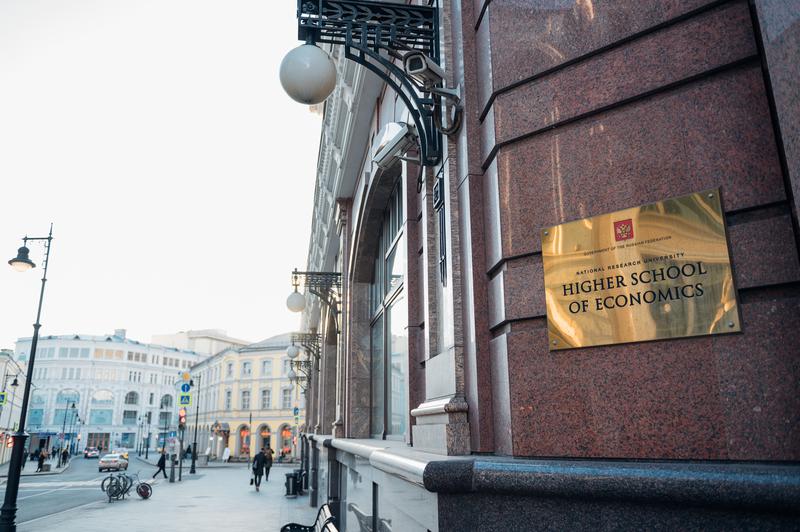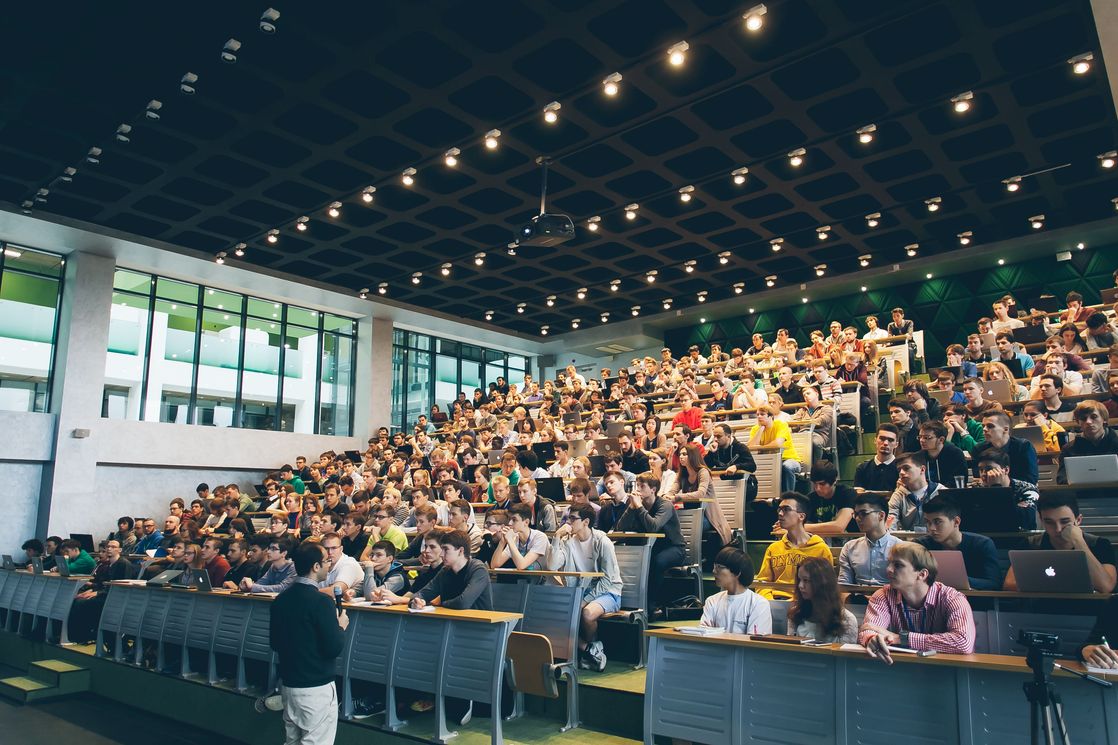Quality of Enrolment in Russian Universities in 2022: Key Findings

HSE University, with the support of the Ministry of Science and Higher Education of the Russian Federation, presented the results of a programme to monitor the quality of enrolment in state-funded and fee-based places at Russian universities in 2022. The study was carried out at the HSE Institute of Education under the supervision of Yaroslav Kuzminov, HSE University Academic Supervisor.
The key indicator for monitoring the quality of enrolment is the weighted average score of the Unified State Examination (USE), which universities use to assess applicants. The USE is one of the simplest, most verifiable and reliable indicators of both the overall reputation of a university (faculty), as well as the likelihood of an applicant enrolling in a particular university and faculty.
All Russian higher education institutions, admission to which is mainly based on the USE results, participate in the monitoring. Universities where creative tests are important for admission (conservatories, art and dance academies, etc), along with the higher education institutions of the security services (which mainly admit graduates of specialised military or maritime schools), were not included in the monitoring.
In 2022, the monitoring covered 812 higher education institutions, including 396 leading state universities, 321 branches and 95 non-state higher education institutions. These account for practically all participants in the Russian higher education market with full-time education.
Access to higher education has remained at a traditionally high level.
The total number of state-funded places for undergraduate studies was 363,000.
Dmitry Chernyshenko
Deputy Prime Minister of the Russian Federation, Dmitry Chernyshenko, noted:
‘Thanks to the Science and Universities national project, we have been able to provide serious support to the country's universities—to improve their scientific and technological equipment and their staffing levels.
We can already see that leading regional universities also attract talented domestic applicants. And this means that the quality of education in Russia is continuously increasing.
In the current environment, the Russian government is paying special attention to the fields of digital, engineering and technology. We will continue to increase the graduate headcount in these fields.’
Valery Falkov
‘Continuing the trend of 2021, the number of entrants to regional higher education institutions increased in 2022. In just two years, the number of “free-of-charge enrolments” has increased by more than 20% at 85 regional universities. A key result is that the average admission score has also increased,’ said Valery Falkov, Head of the Ministry of Science and Higher Education of the Russian Federation.
Yaroslav Kuzminov
‘The Ministry of Science and Higher Education of the Russian Federation has pursued a consistent and fairly successful policy to ensure high-quality education in all regions of Russia. Enrolment targets have gradually been increased at those universities where there was potential to increase the quality of enrolment with an increase in state-funded places. Based on the results of monitoring the quality of enrolment, we can see that this has led not only to an increase in the availability of higher education, but also to an increase in the average score at regional universities. This will make it possible to train highly qualified personnel directly in the field,’ commented Yaroslav Kuzminov.
Recently, a new phenomenon in the Russian higher education system has started to emerge.
The reputation of leading non-metropolitan universities has grown so much in recent years that, even though they have significantly increased their free admissions, these universities have managed to increase both the quality of enrolment and the number of fee-paying students.
Starting from 2020, the average state-funded admission score exceeds 70—the threshold for an excellent grade. In 2022, the quality of admission remained at exactly the same level as in 2021: the average USE score of free admission is 70.3, the average USE score of paid admission is 65.5, and the average USE score across all admissions is 68.6.
‘Overall, the equilibrium point reached in the region of 70 points means that half of the students enrolled in state-funded places are those with the highest scores. This is a very good result. This dynamic is largely due to the fact that enrolment quality monitoring is now seen as one of the most important indicators of university performance. Universities have received a clear signal—they need to fight for good applicants, and they have started to do so,’ said Yaroslav Kuzminov.
The top 25 leaders in terms of quality of free admission (with an enrolment of over 300 students) generally remain stable in composition, with a slight downward trend in the average USE score. The first five universities—MIPT (Moscow Institute of Physics and Technology) (97.1), HSE University-Moscow (95.1), MGIMO (Moscow State Institute of International Relations) (95.1), HSE University-St Petersburg (94.7), and ITMO (Saint Petersburg National Research University of Information Technologies, Mechanics and Optics) (93.7)—remained unchanged in their positions.

Innopolis University (Tatarstan) stands out, with the highest result in 2022: 52 students with an average score of 99.0 were enrolled in state-funded places. The university has the highest share of those enrolled without examinations—86.5%. Innopolis University provides its students with unique study conditions, including a generous scholarship, which enables it to attract very high quality applicants.
‘We have identified an important trend regarding paid admission: in the last two years, the gap in the average score between free and paid admission has fallen below five points for the first time. Almost all fee-paying students who entered in 2022 could, if they wished, enter a state-funded place,’ said Yaroslav Kuzminov.
Monitoring the Quality of Enrolment
HSE University, with the support of the Ministry of Science and Higher Education of the Russian Federation, conducts an annual study of the results of the summer admission campaign to Russian universities.
Monitoring has been conducted by the HSE Institute of Education since 2010 and serves as an important indicator not only of the quality of knowledge of applicants enrolled in the first year, but also of the reputation of the universities themselves. Monitoring has traditionally been a key determinant for applicants in choosing a university and educational programme.
The quality of enrolment is assessed using the average score of the applicants enrolled in the first year based on the results of the USE. The results of winners and prize-winners of olympiads for schoolchildren, who were enrolled by universities without entrance exams, are counted as 100 points (analogous with the monitoring of universities’ efficiency by the Ministry of Science and Higher Education of the Russian Federation).
Detailed tables and figures for all higher education institutions and training areas can be found on the monitoring website (in Russian).
See also:
Quality of Enrolment in Technical Universities has Grown Considerably
On September 3, 2015, Dmitry Livanov, Minister of Education and Science of the Russian Federation, HSE Rector Yaroslav Kuzminov, and Alexander Biserov, Deputy Head of Rosobrnadzor (Federal Service for Supervision in the Sphere of Science and Education) presented the annual monitoring of the quality of enrolment in the state-funded places of Russian universities in 2015 at Rossiya Segodnya IIA (International Information Agency). Among the top ten universities in terms of enrolment quality, HSE took third place and HSE campus in St. Petersburg took eighth.
Best Prospective Students Go to Medical Universities, and Engineering is still out of Fashion
On October 29th, 2014, Alexander Klimov, Deputy Minister of Education and Science of Russia, Alexander Biserov, Deputy Head of Rosobrnadzor (Federal Service for Supervision in the Sphere of Science and Education), and HSE Rector Yaroslav Kuzminov, presented the annual monitoring of the quality of enrolment in Russian higher education institutions. The project was carried out by the Higher School of Economics and the Ministry of Education and Science in partnership with Rossiya Segodnya, an international news agency, and the Public Chamber of the Russian Federation. Below are some conclusions of the study.


